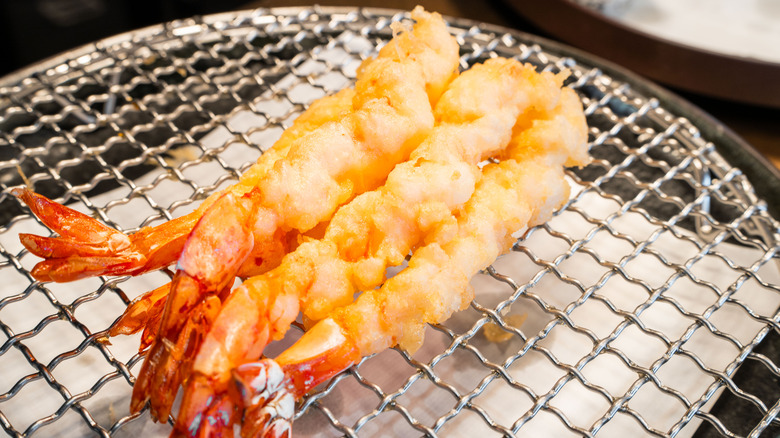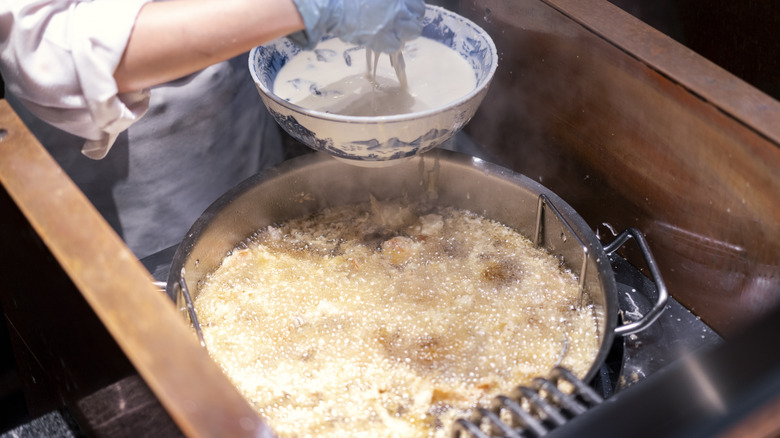The Best Oil To Use For Delicious Tempura
Lightly battered and deep-fried food such as seafood or vegetables — known as tempura — is a dish commonly available at Japanese restaurants worldwide. Perhaps the two features to look for in a delectable tempura are the juicy freshness of the ingredient and the airy crispness of the fried batter. However, recreating it in the comfort of your own home is not for the weak, as both features are not easy to achieve. The tempura frying technique could take professional cooks years to master, let alone the average home cook. But don't give up if your tempura comes out too greasy or burnt; you just need more practice ... or you just need to pay attention to the oil that you use.
Always start with clean, fresh oil that hasn't been tainted with other flavors to get that light fry. As for exactly which type of oil to use, keep it simple by buying tempura oil if it's available to you — Japan and some other parts of Asia are known to sell it in big containers. It usually has some sesame seed oil — a subtle flavor often in the background of every bite of tempura. Tempura oil is not too far off from the kind used at upscale tempura shops, and you'll typically find it in the kitchens of Japan's chain restaurants.
No tempura oil? No problem
Don't fret if you can't get your hands on tempura oil. Just reach for neutral-tasting oils like vegetable oil, rice bran oil, sunflower seed oil, or canola oil. Choosing neutral flavors like such is important because you want the shrimp, eggplant, or whatever ingredient you're deep frying to retain its natural aroma and flavor. You'd also want the few drops of sesame oil — preferably untoasted just like many tempura establishments — that you'll be adding to the oil to quietly stand out.
Even though refined tempura restaurants customarily create their own unique blend of oil consisting of a few different types, sesame seed oil is often included. Some high-end establishments also use cottonseed oil for its noted stability, avoiding unwanted odors or tastes that might occur when oxygen reacts with the oil. Some tempura oil is pre-blended with cottonseed and sesame oil.
It would be surprising if you find a place that makes tempura without sesame oil — it's super uncommon for chefs to do so, but still possible. So with that in mind, it's not the end of the world if you're out of sesame oil — you can even make your own if you wish.

